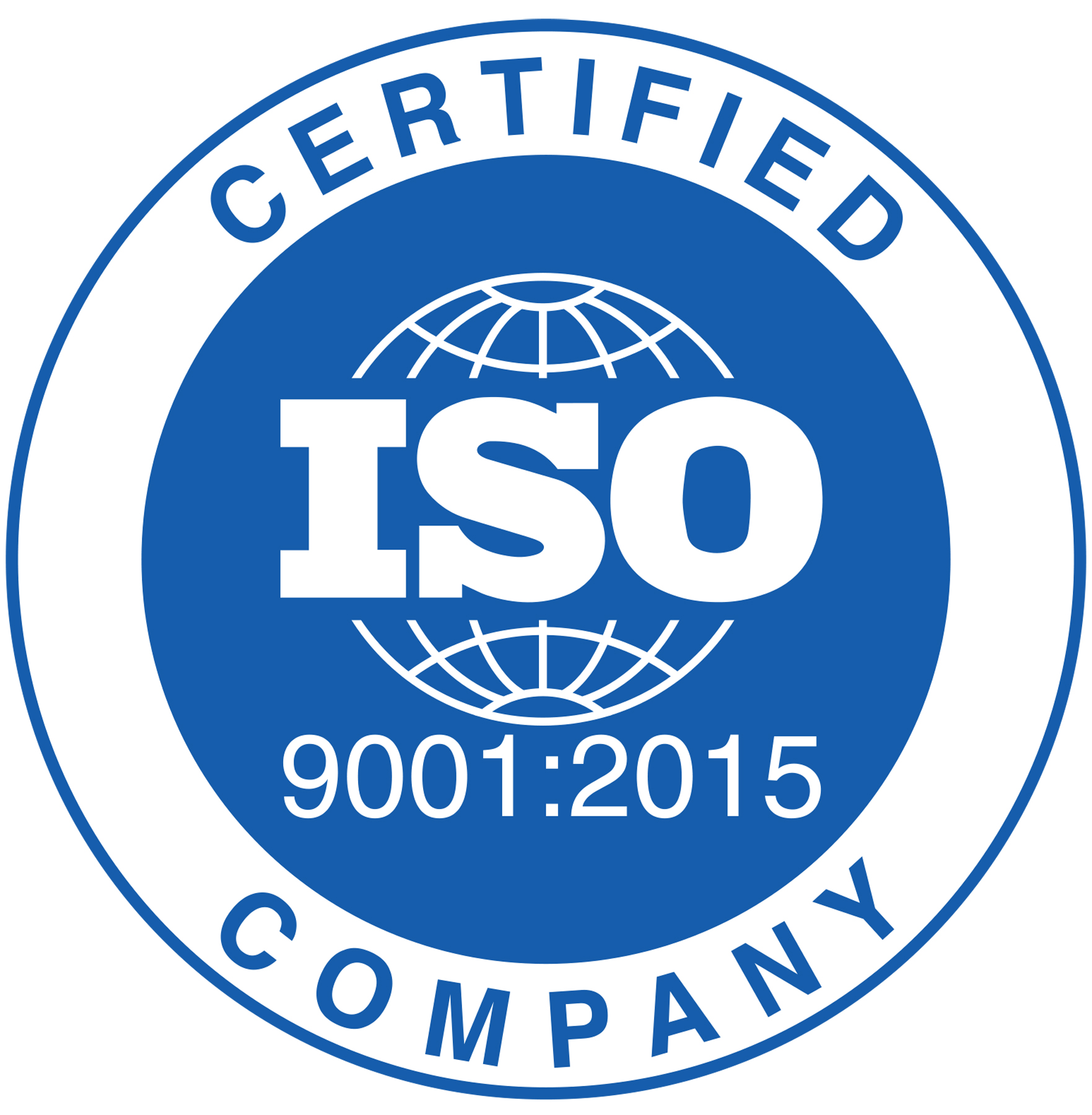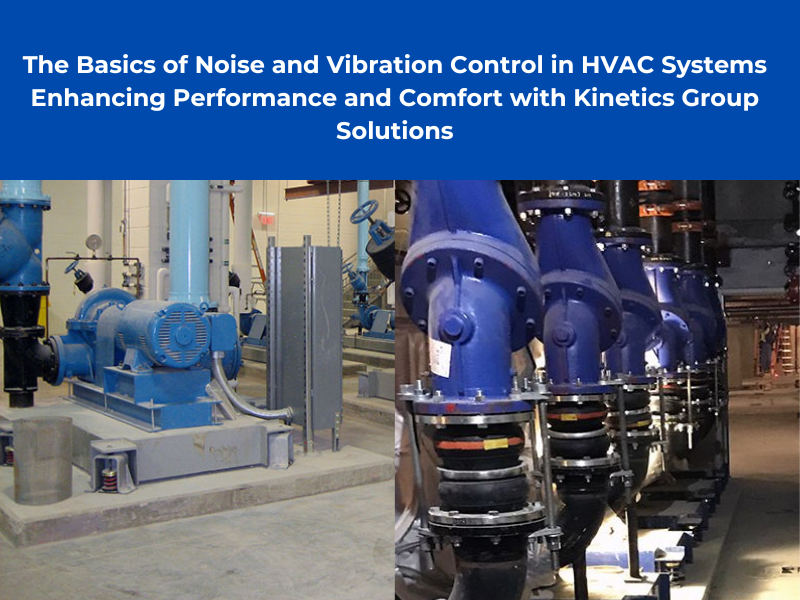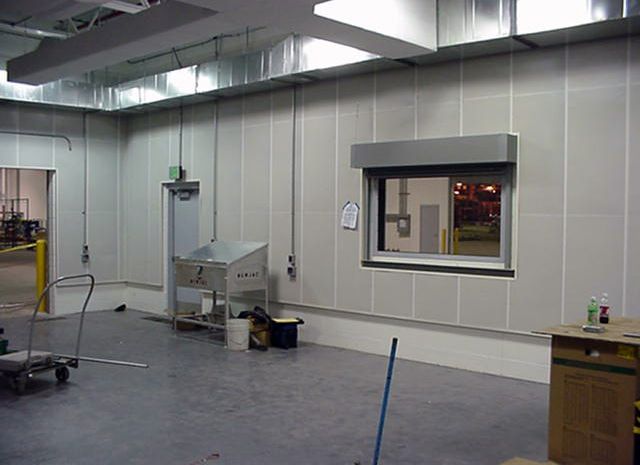The operation of HVAC (heating, ventilation, and air conditioning) systems generates varying degrees of noise and vibration, which, if left untreated, can lead to significant damage to both equipment and building structures. More critically, it can create discomfort for occupants, undermining the very purpose of modern HVAC systems designed for comfort and efficiency.
As a leader in noise and vibration control, Kinetics Group offers an extensive range of products and solutions to manage these issues effectively. Understanding the basics of noise and vibration control in HVAC systems is crucial for engineers, consultants, and contractors. This blog explores the fundamental concepts of noise and vibration isolation, and how Kinetics Group can help enhance system performance, safety, and comfort.
Understanding Vibration in HVAC Systems
Vibration is essentially the oscillation of mechanical systems around an equilibrium point. In the context of HVAC systems, it can occur in equipment such as air conditioning units, compressors, fans, and pumps. These vibrations can be transmitted through the equipment and into the supporting structures, leading to noise propagation throughout the building.
As pointed out by Marty Rogin in this article for Pumps & Systems, vibration can create structure-borne noise, which travels far from the original source, affecting other parts of the building . This is why proper isolation is critical in HVAC design.
Common effects of untreated vibration include:
- Structural damage to the building.
- Noise transmission that causes discomfort to occupants.
- Reduced equipment lifespan due to wear and tear.
- Increased maintenance costs.
- Safety hazards for anyone near the vibrating equipment.
Unresolved vibration can also result in non-compliance with regulatory requirements, making noise and vibration control not just an optional improvement, but a necessity .
Common Sources of Vibration in HVAC Systems
HVAC systems often cause structure-borne noise when equipment is rigidly attached to slabs, walls, or ceilings. Vibration from the equipment can travel through the building structure, potentially spreading the noise across different areas of the facility. As Marty Rogin notes in this article for pumps and systems “Isolation of Noise & Vibration in HVAC & Plumbing Piping Systems-Why rubber is the best choice for reducing problems” even minor vibrations from suspended piping systems or ductwork can turn into significant noise issues .
Common sources of vibration in HVAC systems include:
- Air conditioning units
- Heat pumps
- Compressors
- Power generators
- Suspended piping systems
- Ventilation ducts
When any of these systems are improperly isolated, they can transmit vibrations through connected pipework, conduits, and ductwork, amplifying noise and causing discomfort.
Solving the Problem: Vibration Isolation Solutions
Vibration isolation is the key to addressing these challenges. By isolating the source of the vibration from the supporting structure, Kinetics Group can help eliminate unwanted vibrations and noise. The use of vibroacoustic isolators, as described in this Pumps & Systems article, can absorb up to 99% of the excess vibration generated by HVAC equipment .
How to Select the Right Vibration Control Solution
Choosing the correct vibration isolation solution for your HVAC system requires careful consideration of multiple factors:
- Equipment specifications: The size, weight, and attachment points of the equipment will determine the type of isolator needed.
- Location of the equipment: For example, rooftop-mounted units require different isolation solutions compared to basement installations.
- Vibration excitation of the equipment: The rotational speed of the machinery will influence the type of isolator required.
- Building type: For high-end projects such as hospitals or luxury apartments, higher vibration control standards are needed.
- Environmental considerations: The surrounding environmental conditions such as temperature, humidity, and corrosiveness will impact isolator choice.
With a clear understanding of the installation requirements and external considerations, it becomes easier to select the most effective vibration isolation solution.
Kinetics Group’s Advanced Noise and Vibration Control Products.
Kinetics Group provides a range of specialized products to tackle noise and vibration in HVAC systems. Below are some of the key solutions we offer:
Vibration Isolators for HVAC Equipment
Application: Kinetics’ vibration isolators are ideal for use with air handling units (AHUs)(figure 1), fan coil units (FCUs), and centrifugal fans. They significantly reduce the transmission of vibrations into the building structure, ensuring smoother operation.
Features: Available in spring, rubber, or combination designs, our isolators provide high-efficiency vibration damping.
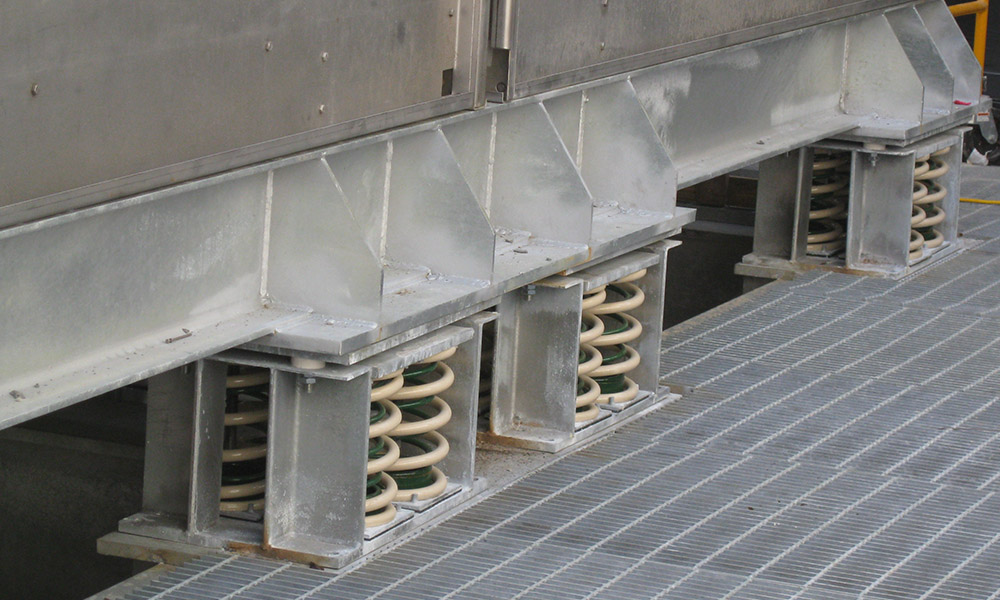
Application: Used to support mechanical equipment(Figure 2) such as pumps and compressors, inertia bases reduce rocking and provide stability, especially during start-up and shut-down phases.
Features: These bases lower the equipment’s center of gravity, enhancing stability and reducing motion, while acting as a noise barrier.
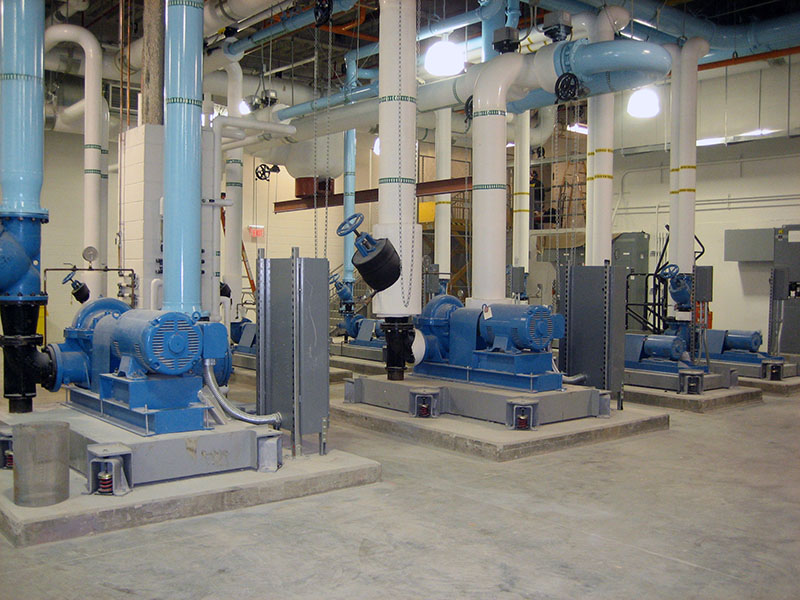
Watch this video from Kinetics showing how Inertia bases together with spring isolators are installated
Application: Designed for use with chilled water piping and FCUs, these connectors accommodate thermal expansion and reduce vibration transmission in HVAC piping systems.
Features: Made of stainless steel, they ensure system flexibility and noise reduction.
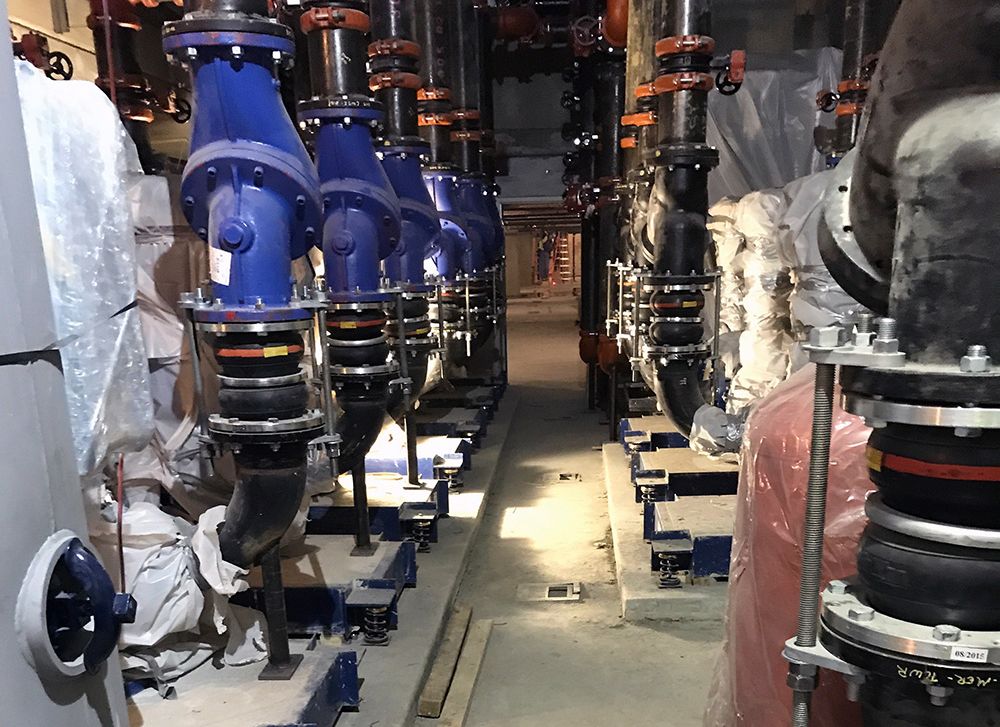
Application: Ideal for mechanical rooms and other critical areas where noise and vibration must be minimized. The RIM Floating Floor system offers exceptional noise reduction by creating airspace and isolating equipment such as chillers and pumps.
Features: Easy installation with pre-spaced isolation pads, effective in reducing vibration and structure-borne noise from heavy mechanical equipment
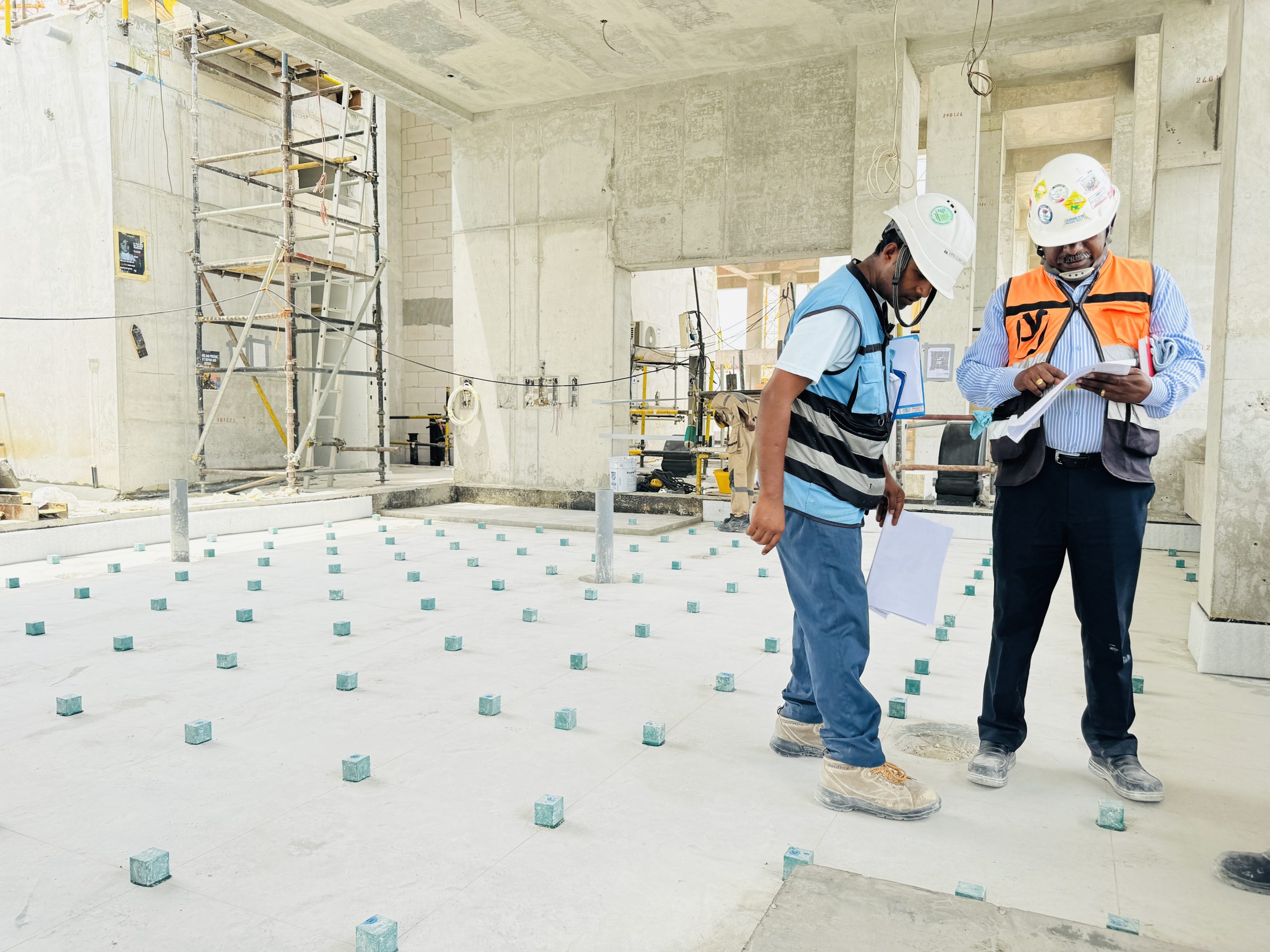
Click here to watch a full installation of the Kinetics RIM Floating floor.
Acoustic Barrier Treatment for Chillers.
Application: Acoustic barriers are essential for reducing noise emissions from chillers, improving overall acoustic performance in noise-sensitive environments.
Features: High-performance soundproofing materials that meet industry standards.
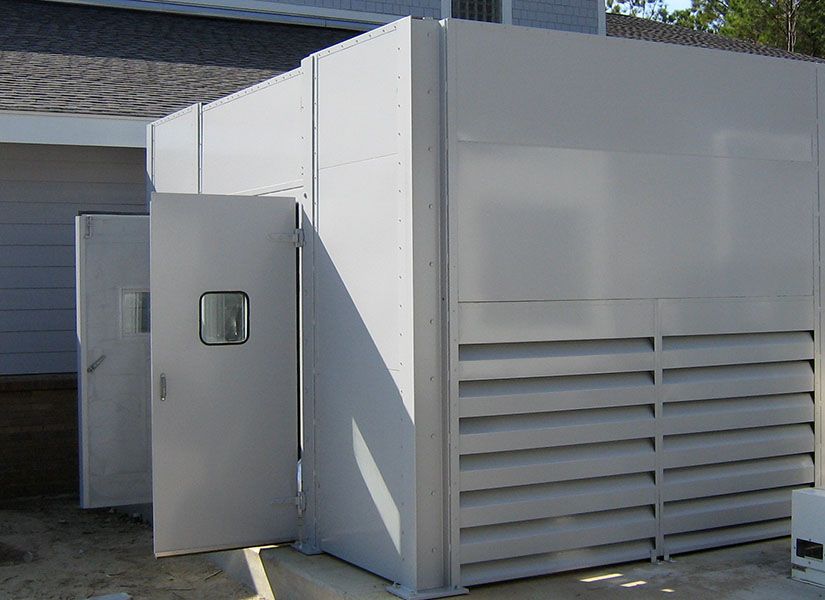
– Application: Used with generators and other mechanical equipment, these panels serve as noise barriers while allowing airflow for cooling purposes.
– Features: Durability and acoustic efficiency, making them ideal for industrial applications.
View Kinetic’s entire range of noise and vibration products such as seismic and wind restraints, pipe riser isolation, V and U Loops and many more
Why Noise and Vibration Control Matters
Effective noise and vibration control is essential for the longevity of HVAC systems and the comfort of building occupants.
Controlling vibration not only prolongs the life of mechanical systems but also significantly reduces maintenance costs . By selecting the right isolation solutions, you can:
- Prolong the lifeof HVAC equipment, reducing wear and tear.
- Lower maintenance costs over time.
- Ensure a safe and comfortable environment for building occupants.
- Comply with local noise and vibration regulations.
Conclusion: A Leader in Noise and Vibration Control
Kinetics Group, with its wide array of noise and vibration control solutions, ensures that HVAC systems operate smoothly, quietly, and efficiently. From vibration isolators to flexible connectors, our products are designed to deliver optimal performance in any HVAC application.
By partnering with Kinetics Group, you gain access to top-tier products backed by decades of expertise in noise and vibration control.
Contact us today to explore how our solutions can support your next project.
- info@kineticsgroup.ae
- sales@kineticsgroup.ae
- www.kineticsgroup.ae
- +97148857361


